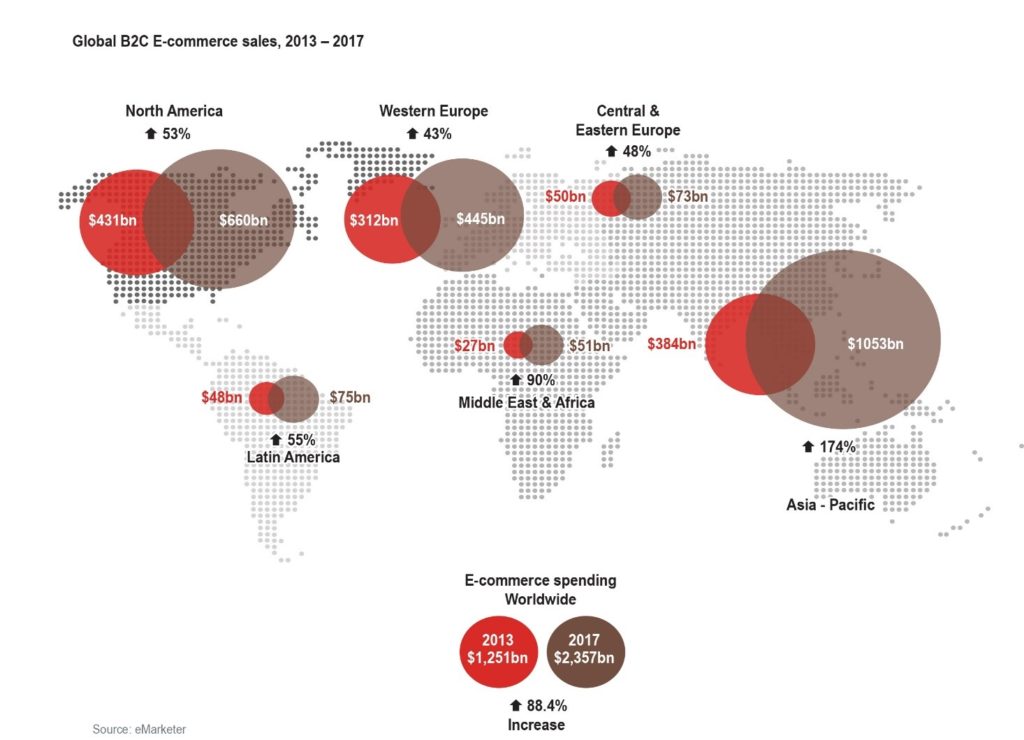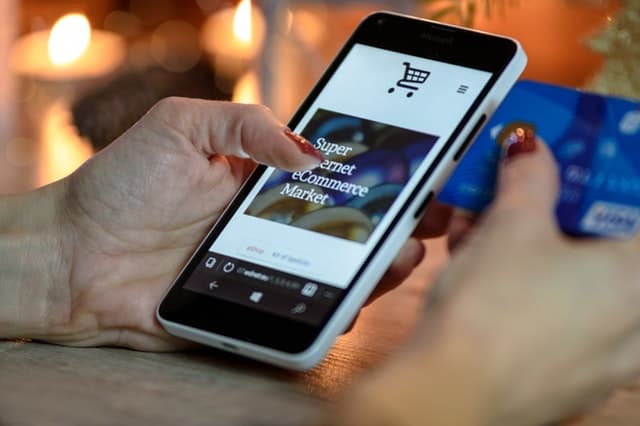For being such a fairly new innovation, e-commerce is off to a strong start.
In the 1950’s, when scientists were developing the first electronic computers, the internet was a far-off dream. E-commerce wasn’t even a word.
In the 1980’s Swiss scientist Tim Berners-Lee developed the first protocols for the World Wide Web, and by 1993, 1% of two-way telecommunications were conducted over the fledgling network. However, by 2007, only 14 years later, more than 97% of telecommunications flowed over the internet.
E-commerce took shape during those 14 years, and it continues to grow and develop today.
The Growth of E-Commerce
These days, we take it for granted that we can communicate with anyone instantly, thanks to the internet. Millennials, having grown up with tablets and smartphones and personal computers, prefer shopping online—especially on their phones.
E-commerce is therefore growing at a faster rate than brick and mortar retail sales. According to eMarketer, the value of online sales is estimated to exceed $4 trillion in just 3 years.
What Does This Mean for Traditional Retailers?
Meanwhile, as of June 2017 more than 300 retailers had filed for bankruptcy. This represents an increase of 31 percent over 2016, and well recognized brands such as Payless, Sears, RadioShack and Gymboree are among the retailers affected. The situation is becoming so desperate that the massive Galleria Mall at Pittsburgh Mills was sold for only $100.
While it may be too early to predict the death of brick-and-mortar retailers, consumers have easily adapted to shopping online.
So, What Have You Done for Me Lately, E-Commerce?
Among the top game changers in e-commerce are multi-channel sales, which simply means that companies sell to customers wherever those customers happen to be. Whether they’re on social media, email, comparison sites, auction sites or other online sites, consumers find what they want when they want it. Vast arrays of the products they’re looking for enthrall them, in a practically unlimited selection of price range, style, and color.
What’s more, shopping has never been more convenient, and consumers complete their transactions with only a few taps on the screens of their smartphones.
RELATED ARTICLE: 5 SIGNS YOU SHOULD “RE-PLATFORM” YOUR E-COMMERCE BUSINESS
Drop Shipping
Thanks to such companies as the Lithuanian start-up Oberlo, the landscape of online marketing continues to shift dramatically. Built around an old business model known as drop shipping, the company offers sellers the opportunity to simply collect and process orders. They don’t need to be concerned about inventory and fulfillment, as a third party handles all of that.
As a matter of fact, it is now possible for anyone to begin selling on the web almost immediately, with virtually no capital outlay.
The drop shipping business model is not a new one. Nearly 25% of all online retail purchases rely on drop shipping. Drop shipping is valued at more than $85 billion, and it’s expected to grow by more than 17% in 2017.

If you think you might want to go into business as a drop shipper, here are some of the benefits you can expect:
- You’ll have practically no overhead.
- You won’t need to purchase any inventory.
- Suppliers will complete your customers’ purchases.
- You can get started easily.
- You can have hundreds of items pushed to your storefront within minutes.
Drop shipping is not all fun and games, though, so if you’re thinking about going this route, be sure to check out its disadvantages as well as its benefits and choose wisely.
More Changes on the Horizon
Some of the other new trends in e-commerce:
Beacon Technology
Beacon technology integrates online and offline business by sending signals to mobile devices using indoor geolocation technology. With beacon technology, the customer sees personalized deals and bargains on their smartphone whenever they step into a store. Already, there more than a million beacons installed in stores throughout the U.S., sending signals to mobile devices.
Those retailers who can swiftly adapt will weather the changes in the marketplace, and they might even find that their costs are lower, too.
Mobile Technology
Consumers’ love for their smartphones is a major contributor to the growth of e-commerce. As a matter of fact, commerce over mobile technology is expected to total about $7 trillion by 2019.
Other New Trends
- Millennials now make up more than 25% of the population, and most of them prefer shopping online.
- The logistics of sales processing is changing. Retailers now try to spread promotions throughout the year, and they are likely to phase out concepts such as Black Friday and Cyber Monday.
- New payment methods are quickly replacing the traditional wallet with its multiple credit cards. In its place are wearable mobile devices such as watches and rings with embedded technologies that allow them to exchange information simply by placing them next to another device.
More to Come
While e-commerce has enjoyed exponential growth in recent years, you can be sure that more changes are still to come. Now is a good time to jump on board, as it can only get better from here.
